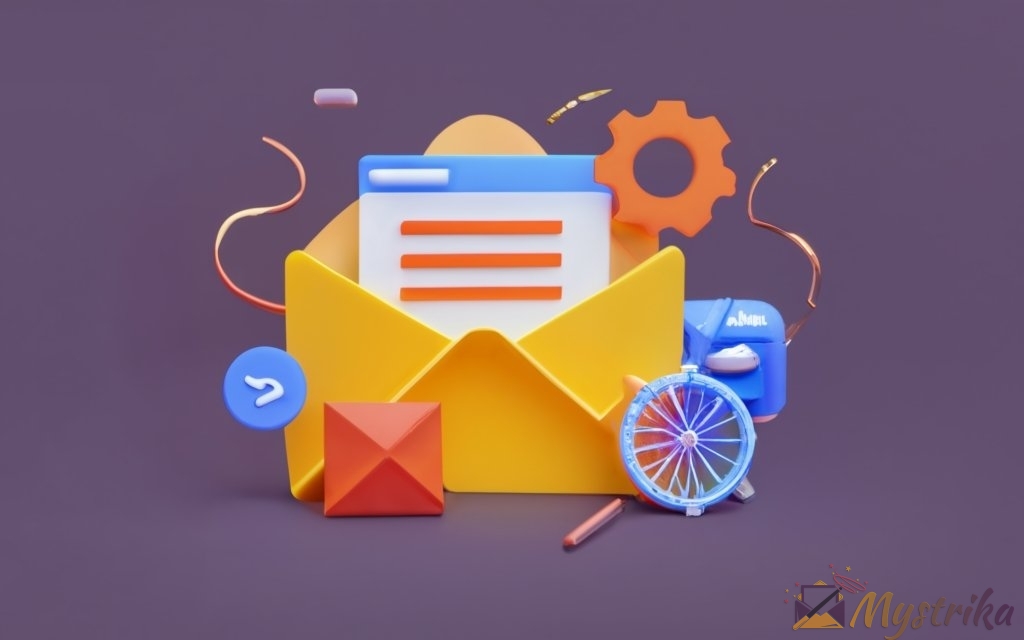Getting your emails reliably delivered to the inbox is the holy grail of email marketing. Without it, even the most captivating message and perfectly targeted outreach goes to waste.
But inbox placement certainly isn’t guaranteed, especially when sending cold outreach emails. One wrong move can land you in the dreaded spam folder faster than you can say “blocked sender”.
So how do savvy email marketers stack the odds in their favor?
The answer lies in the ancient art of email warm-up – a meticulous, theories-old ritual designed to get on the good side of the all-mighty spam filters.
Once shrouded in mystery, the world of modern email warm-up is now more accessible than ever thanks to handy automation tools. But a bit of strategy and patience still goes a long way.
In this guide, we’ll unravel the intricacies of effective email warm-up, illuminating topics like:
- Why building sender reputation is critical
- Step-by-step warm-up processes and procedures
- How engagement and authentication influence deliverability
- When and how to leverage automation to your advantage
- Ongoing maintenance tips for long-term inbox success
So whether you’re about to embark on your first cold outreach campaign or are a seasoned email marketer, grab a warm beverage and settle in. By the end, your deliverability IQ will be leveled up and ready to soak up the rewards of well-warmed inboxes.
What is Email Warm Up?
Definition and purpose of email warm up
When it comes to running successful email campaigns, having your messages consistently land in the recipient’s inbox is absolutely critical. Email warm-up refers to the process of establishing a positive reputation for a new or inactive email address in order to improve deliverability and avoid blocking by spam filters.
Definition of Email Warm-Up
Email warm-up involves gradually increasing the number of emails sent from a fresh email account over a period of several weeks. This is done in conjunction with ensuring high engagement on those emails through opens, clicks, and replies. The goal is to demonstrate natural, human-like activity patterns and build trust with major email service providers.
A proper warm-up typically takes 8-12 weeks, starting with very low volumes like 5-10 emails per day and progressively increasing to desired sending levels. Engagement should be monitored and maximized throughout. When done correctly, this warm-up period allows the account to establish enough of a positive history to avoid spam folder filtering.
Role of Email Warm-Up
The role of email warm-up is to essentially train email providers that your account is trustworthy and not a source of spam or abuse. Major providers like Gmail, Outlook, and Yahoo all closely analyze the sending patterns and engagement metrics of new accounts to determine their reputation.
Without warming up, an account looks risky – imagine suddenly sending thousands of emails when you’ve had no prior relationship or engagement. Warm-up demonstrates real,qualified audience interest in your content over time.
Why It’s Essential
Warming up is essential because past behavior is the primary criteria ESPs use to evaluate future emails. Without taking the time to methodically build your sender reputation, your account will likely be labeled high-risk, leading to poor deliverability or even blocking.
Even if your emails are perfectly crafted and highly relevant, you will miss out on connecting with recipients if those messages are filtered to spam. Warm-up helps build the foundation for ongoing email success.
Improving deliverability and avoiding spam filters
The main motivation behind email warm-up is to maximize deliverability, or your emails consistently reaching the inbox. Spam filters are the biggest obstacle to deliverability for any new or reactivated accounts.
Importance of Email Deliverability
Deliverability refers to the percentage of your sent emails that actually make it to the recipient’s inbox rather than getting filtered out as spam or otherwise blocked. Industry averages are only around 90% for cold outreach campaigns.
Even seemingly minor impacts of 5-10% lower deliverability can significantly hurt open rates, clicks, and conversions. That directly translates to lower ROI from email campaigns. Investing in proper warm-up provides long-term dividends through improved deliverability.
According to multiple data sources, warming up accounts can raise inbox placement rates to 95% or higher for cold emails. This results in much higher open rates and thus more sales opportunities.
Building sender reputation with major email providers
The most critical component of successful email warm-up is establishing a positive sender reputation, which is how email providers view your sending behavior. Each major ESP uses proprietary algorithms to determine reputations.
Establishing Trust with Email Service Providers (ESPs)
Major ESPs like Gmail, Outlook, and Yahoo aim to provide the best user experience by filtering out spam, phishing attempts, and abuse. That means every new sender is essentially guilty until proven innocent when it comes to reputation.
Through gradual warm-up, you demonstrate responsible sending patterns that build trust. Consistency and engagement over time are the keys to developing a relationship with ESPs.
Avoiding Spam Filters
Spam filters automatically blacklist senders with poor reputations and shunt their emails to the spam folder or reject them entirely. This is done based on sophisticated analysis of factors like sending infrastructure, volume patterns, engagement metrics, and user complaints.
Even if your emails are useful and relevant, a negative reputation means recipients won’t see them. Warm-up minimizes the chances of incorrect spam labeling.
Enhancing Deliverability Rates
Building sender authority improves your deliverability, which refers to what percentage of sent emails reach inboxes rather than getting filtered out. Industry averages are around 90% for cold campaigns.
With proper warm-up, companies see 95%+ inbox placement rates, meaning more recipients exposed to your messages and fewer missed opportunities.
Building a Positive Sender Reputation
The cumulative assessment of your behavior as a sender constitutes your “sender reputation”. This reputation ultimately determines whether you are considered a trusted source or potential spammer.
Positive factors like consistent volume patterns, engaged recipients, and lack of complaints gradually improve your reputation over the warm-up period.
The Significance of Sender Reputation
Your sender reputation has a massive influence on email success. Even one negative factor like unusual volume spikes can raise flags. Deliverability and inbox placement live or die based on ongoing reputation.
How ESPs Evaluate Senders
Major inbox providers use complex algorithms and real-time metrics to score senders. Signals like sending infrastructure, complaint rates, and engagement are all considered. New accounts start neutral but are closely analyzed.
Benefits of a Positive Reputation
A positive reputation earns you trust, with ESPs allowing greater sending freedom and keeping your emails out of the spam folder. This leads to excellent deliverability and higher campaign ROI through more opens, clicks, and sales.
Strategies for Building Sender Reputation
There are proven strategies to build great sender reputations during warm-up and maintain them long-term:
Consistent Email Sending Patterns
Gradual volume ramp-ups and steady daily sending without sudden spikes are key. This shows predictable, natural behavior versus dangerous mass blasting.
High Engagement Rates
Earning opens, clicks, and replies signals recipients find value in your emails. Prioritize stimulating interest from your test contacts.
Low Complaint Rates
Spam button clicks or report abuse actions severely damage reputations. Carefully crafted email content and providing opt-outs limits negative feedback.
Best Practices with Major Email Providers
Tactics for optimal warm-up vary across major email providers based on their reputation criteria:
Gmail
Gmail heavily weights engagement and user satisfaction signals for reputation.
Guidelines for Gmail Senders
- Gradually increase sending from new accounts over 8-12 weeks
- Stimulate opens, clicks, and replies from test recipients
- Avoid red flag terms like “Free” or “Sale” in early emails
- Quickly resolve spam folder placements or blocking
Building Trust with Gmail
- Prioritize engaged recipients at Gmail, Google Apps, etc.
- Send very targeted content focused on reader value
- Closely track Gmail spam filter detections
- Enable authentication mechanisms like SPF, DKIM, and DMARC
Outlook
Outlook focuses on technical signals like IP reputation along with user engagement.
Outlook’s Sender Reputation Factors
- Level of user engagement with emails
- Volume patterns from associated IP addresses
- Historical domain reputation
- Instance of security mechanisms like DKIM signatures
How to Improve Reputation with Outlook
- Begin sending from reputable IP address if possible
- Warm-up IP usage to avoid sudden volume spikes
- Reply promptly to Outlook recipients during warm-up
- Carefully craft content to avoid spam filter triggers
- Enable multilayer email authentication for Outbound emails
In summary, proper warm-up is about much more than just increasing sending volume. Establishing legitimacy across factors like engagement, authentication, and volume patterns builds trust for long-term inbox success.

Why Email Warm Up Matters
Proper email warm-up is not just a nice-to-have – it’s absolutely essential for running successful cold outreach and newsletter campaigns. When new or inactive accounts blast emails without warming up, the consequences can be severe, from immediate blocking to long-term reputation damage.
Highlights importance of reaching recipient’s inbox
The end goal of any email campaign is to consistently and reliably reach the inboxes of your target audience. If your emails are sent directly to spam or blocked entirely, recipients will never see your messages or engagement prompts.
Landing in Spam is waste, no one reads it
Industry data shows that over 90% of messages that end up in the spam folder are never opened. Even if you have the most compelling subject line or content, it is pointless if the email never makes it past the spam filter.
Warmed-up accounts see upwards of 95% inbox placement for cold emails. That makes proper warm-up perhaps the single most impactful tactic for improving email visibility.
Consequences of not warming up for cold outreach
Jumping into cold outreach without taking time to warm-up leads to predictable and preventable issues:
- Blocking or throttling: Sending high volumes out of the gate often triggers blocking by ESPs or reduced sending speed. This can take weeks or longer to reverse.
- Spam folder filtering: Aggressive sending results in more emails labeled as spam, trained by low engagement signals.
- Blacklisting: If blocking occurs, new emails may be automatically blacklisted as high-risk.
- Reputation damage: History of blocks, spam filters, and complaints hurts future deliverability.
- Lower response rates: With under 50% visibility, response rates will suffer significantly.
These consequences emphasize why patience and gradual warm-up is so critical for new accounts or campaigns. It can make or break your email success.
Improving Deliverability
Understanding deliverability and how warm-up fits into the big picture can help motivate proper warm-up processes.
Understanding Deliverability
Deliverability refers to the percentage of emails sent that actually arrive in the recipient’s inbox rather than being filtered out or bounced.
What It Encompasses
Deliverability is determined by multiple technical and behavioral factors such as sender reputation, infrastructure, email content, list accuracy, and more. Optimizing each element is key for deliverability.
Key Metrics (Open Rate, Click-Through Rate, Bounce Rate)
Key metrics provide insights into deliverability:
- Open rate – % of emails opened
- Click-through rate – % containing clicks
- Bounce rate – % rejected or bounced back
High open and click rates show inbox arrival, while low bounce rates confirm accurate contact lists.
Factors Affecting Deliverability
Major factors impacting inbox placement include:
Sender Reputation
As discussed in section one, ESPs use multiple behavioral signals to determine sender authority and trust, which directly enables or hinders deliverability.
Content Quality
Email content free of spam triggers like suspicious links or deceitful language has much higher deliverability. Well-crafted, personalized copy signals legitimate outreach.
List Hygiene
Verified, accurate email lists minimize bounces and complaints that would lower sender reputation. Regular list cleaning is essential.
Authentication and SPF/DKIM/DMARC
Proper implementation of authentication technologies like SPF, DKIM, and DMARC confirms domain validity and improves deliverability.
The Role of Email Warm-Up in Deliverability
When incorporated into a holistic deliverability strategy, warm-up provides major benefits:
How Warm-Up Enhances Deliverability
- Builds sender reputation and trust with ESPs
- Trains filters that emails are not spam
- Unlocks higher sending limits
- Reduces blocking risks
According to multiple sources, domains warmed up for at least 60 days see an average of 92% inbox placement compared to just 71% for domains without warm-up.
Long-term impacts on domain and IP reputation
A common misconception is that warm-up is only relevant when initially launching an account or campaign. In reality, reputations must be managed long-term.
Letting established domains or dedicated IPs sit inactive for extended periods similarly allows reputations to decay. Periodic warm-up maintains positive momentum.
Likewise, ongoing engagement issues or sudden changes with high-volume accounts can damage established reputations quickly. Consistent warm-up paired with monitoring helps sustain excellent deliverability.
In summary, proper warm-up lays the reputation foundation for long-term email success. The temporary time investment leads to permanent rewards in trust and inbox placement.

Manual Email Warm Up Process
While automated tools now exist to simplify reputation building, it is still possible to manually warm up an email account or domain if you take the right approach. Let’s walk through a step-by-step guide to DIY email warm-up.
Step-by-step instructions for DIY approach
Warming up an email account manually takes careful planning and consistent execution over 8-12 weeks. Follow these best practices for a successful DIY warm-up.
Setting Up the Warm-Up Process
- Use a new domain: Begin with a fresh, unused domain with no reputation attached. This allows you to build from a neutral starting point.
- Verify domains: Properly configure SPF, DKIM, and DMARC authentication to verify domain ownership.
- Acquire dedicated IP(s): Utilize dedicated IP(s) you directly control throughout the warm-up period for maximum flexibility.
- Identify targets: Compile contact lists for major ESPs like Gmail, Outlook, Yahoo. Prioritize contacts likely to engage.
Selecting Email Addresses for Warm-Up
- Use personal contacts: Start with small batches of emails from friends, family, and colleagues. Their established accounts aid reputation building.
- Prioritize target domains: Focus on email domains that match those you’ll target for outreach like @companyname.com.
- Acquire known good emails: Services like Mystrika provide guaranteed good, active email addresses in warmup pool to build engagement.
Creating a Warm-Up Schedule
- Start with 5-10 emails/day: Begin with just a handful of manual emails daily to acquaint ESP filters with your sending.
- Increase volume gradually: Add ~10 more emails per day each week, accelerating as you approach desired volumes.
- Creat volume thresholds: Define volume thresholds like 50/day, 100/day before crossing to help pace increases.
- Schedule emails in small batches: Spread emails throughout day and avoid blasting many simultaneously.
Crafting Engaging Warm-Up Content
Content quality is just as important as volume patterns to demonstrate legitimacy.
Importance of Relevant Content
Warm-up emails must provide value and stimulate engagement. Avoid spammy language/tactics – focus on interesting, personalized messages.
Crafting emails recipients enjoy ensures optimal engagement signals like opens, clicks, and replies. Prioritize relevance over promotions.
Tips for Creating Engaging Emails
- Research recipients to enable personalization
- Handwrite short notes or anecdotes
- Include interesting articles or resources
- Pose questions to encourage replies
- Reference previous conversations / meetings
Spending time on warm-up content pays dividends through recipient actions that build reputation.
Sending initial emails and gradually increasing volume
Proper warm-up requires starting slow and letting account reputation build progressively.
Initial Low-Volume Sends
When first launching warm-up, maintain very low volumes like 5-10 manual emails daily. This establishes initial patterns before ramping up.
It may feel too slow, but restraint early on avoids triggering filters sensitive to new accounts suddenly sending large volumes. Take it step-by-step.
Incremental Volume Growth
With a foundation set, begin increasing daily warm-up volumes incrementally every 1-2 weeks.
Add ~5 more emails per day each ramp-up period. Also expand your test contact list as needed to support growth.
As the account establishes legitimacy through engagement, accelerate volume expansions while still avoiding sudden spikes.
Ensuring engagement through replies and opens
Engagement metrics like opens, clicks, and replies are critical for building sender authority.
Monitoring Engagement Metrics
Actively track open and reply rates daily, aiming for at least 30-50% open rate and 10-20% replies.
Lower engagement can signal issues with target selection or content. Refine your approach to stimulate increased activity.
Adjusting Warm-Up Strategies
If engagement drops, pause volume increases until metrics improve.
Evaluate content and research new test contacts if needed. Prioritize inbox placement over speed or numbers.
Patience and focus on engagement leads to long-term returns in sender reputation.
Maintaining conversations threads
Conversational back-and-forth exchanges provide powerful reputation signals as they mimic natural email flows.
With manual warm-up, take the time to nurture conversation streams by thoughtfully replying to questions and comments. Seek extended dialogue when possible.
Consider creative ways to spark discussions like asking questions, sharing ideas, or requesting advice.
Concentrate on simulating realistic engaging conversations, not just blasting one-off emails.
Avoiding pitfalls like spam triggers
Even while gradually warming up, poorly constructed emails can trigger spam filtering and undermine progress.
The Spam Filter Challenge
Spam filters present a significant hurdle to inbox placement, especially with new senders.
How Spam Filters Work
Advanced filters analyze email content, links, attachments, and other signals to predict spam based on patterns. Any anomalies can trigger filtering.
Common Triggers for Spam Filters
- Aggressive calls-to-action
- Excessive links, images, or attachments
- Suspicious link domains
- Missing authentication records
Strategies for Avoiding Spam Filters
Carefully crafted emails and proper domain configuration avoids false spam labeling:
The Gradual Warm-Up Approach
Slow volume ramp-up combined with engaged recipients trains filters that emails are desired.
Crafting Spam-Compliant Content
Avoid common filter triggers like time pressure claims or excessive punctuation/capitalization.
Authentication Protocols
Correct SPF, DKIM, and DMARC authentication confirms domain validity.
Tools and Services to Assist
Third-party tools provide visibility into spam filter behaviors:
Email Testing and Validation Services
Services like Mail-Tester run deliverability diagnostics on emails to identify possible spam triggers proactively.
Spam Filter Testing Tools
Tools like Mail-Tester allow sending test emails through major ESP filters for spam probability.
Manual warm-up without support tools demands exceptional diligence and patience. But those investments establish the foundation for ongoing positive engagement and excellent deliverability.

Authenticating Your Account
Proper email authentication mechanisms like SPF, DKIM, and DMARC are essential components for delivering emails reliably. When implemented correctly, these protocols build sender credibility, enhance deliverability, and protect against spoofing attacks.
Explaining SPF, DKIM, DMARC, and custom domains
Let’s explore the purpose and function of key email authentication technologies.
SPF (Sender Policy Framework)
Sender Policy Framework (SPF) prevents unauthorized use of domains by verifying sending servers.
What is SPF?
Definition and Purpose
SPF is an authentication protocol that identifies authorized mail servers permitted to send emails from a domain through DNS records.
The goal is to prevent spoofing by confirming valid sending sources. Having SPF stops others from forging “From” addresses using your domain.
How SPF Works
When an email is received, the recipient’s server checks the SPF record published in DNS to see if the sending server is authorized to use that domain.
If the server is not included in the SPF record, the email may be filtered as spoofed. This allows receivers to authenticate senders.
Setting Up SPF
Correctly configuring SPF involves creating the right TXT record in your DNS zone.
SPF Records and Syntax
SPF records follow a defined syntax of mechanisms and modifiers. For example:
v=spf1 ip4:192.168.1.1 -allThis authorizes the IP 192.168.1.1 to send mail for this domain, while “-all” fails non-matching IPs.
Common Mistakes to Avoid
- Typos in IP addresses or syntax errors
- Omitting critical IPs and mechanisms
- Using the incorrect domain or record type
- Forgetting to re-check and update records
Carefully implement and validate your SPF record to avoid deliverability issues.
Benefits of SPF Authentication
SPF provides two major advantages:
Preventing Unauthorized Senders
By only permitting designated servers, SPF blocks spoofing attempts from unknown sources. This protects brand reputation.
Enhancing Deliverability
Valid SPF configuration proves domain legitimacy and compliance, earning trust with recipients. This smooths email delivery.
DKIM (DomainKeys Identified Mail)
DomainKeys Identified Mail (DKIM) cryptographically signs emails to confirm authenticity.
Understanding DKIM
Explanation and Objectives
DKIM works by adding encrypted signature headers during mail transmission that the receiver can validate to authenticate the message.
This aims to prevent tampering and prove emails actually came from the domain’s servers. DKIM signatures provide non-repudiation.
How DKIM Adds a Digital Signature
The sending server calculates a hash using the email content + private key then adds this in the DKIM-Signature header.
The receiving server uses the public key to decode the signature and verify it matches the content, authenticating the source.
Implementing DKIM
Configuring DKIM involves generating key pairs and publishing public keys in DNS.
Generating DKIM Keys
A public/private key pair is created for your domain to sign and verify with. The private key is kept secret while the public key is shared.
Configuring DNS Records
A TXT record containing your public key is added to publish in DNS. Receivers fetch this to decode DKIM signatures.
Advantages of DKIM Authentication
DKIM signatures provide two key benefits:
Verifying Email Integrity
By checking DKIM headers, recipients can confirm emails were not manipulated or falsified during transit.
Building Trust with Recipients
Valid DKIM signatures prove emails definitively originated from your infrastructure, increasing trust.
DMARC (Domain-based Message Authentication, Reporting, and Conformance)
DMARC builds on SPF and DKIM to strengthen authentication using policies.
Introduction to DMARC
Defining DMARC’s Role
DMARC is a policy framework that requires SPF/DKIM checks to pass before accepting mail as authentic from a domain.
It enables domains to control how non-compliant mail should be handled by recipients.
How DMARC Combines SPF and DKIM
For DMARC compliance, the “From” domain must pass:
- SPF check of sending infrastructure
- DKIM signature verification on contents
This ensures both origin and content integrity.
Deploying DMARC
Using DMARC involves crafting the right TXT records and policies.
Creating DMARC Records
A TXT resource record is added to DNS specifying the DMARC policy for a domain.
Setting DMARC Policies
DMARC policies define handling of non-compliant mail:
- “None” – Monitor and report only
- “Quarantine” – Route to spam or quarantine folder
- “Reject” – Reject non-compliant messages entirely
Start with “None” then gradually tighten policies.
Benefits of DMARC
DMARC enhances email security and compliance through:
Comprehensive Authentication
DMARC requires passing both SPF and DKIM checks for authenticated mail. This provides layered security.
Reporting and Enforcement
DMARC policies allow monitoring misuse and enabling enforcement, giving domains control over mail handling.
Custom Domains
Using a custom domain with authenticated emails inspires confidence in recipients.
Custom Domain Basics
What is a Custom Domain?
A custom domain is a unique, brand-aligned domain name registered specifically for an organization, like “@yourcompany.com”.
Reasons to Use Custom Domains
- Company branding and professional identity
- Consistent addressing and links
- Flexibility to change email providers
- Enhanced credibility over shared domains
Setting Up Custom Domains
Utilizing a custom domain involves:
Domain Registration and Configuration
Register your desired domain then correctly configure DNS records, including those for email authentication.
Integrating Custom Domains with Email Platforms
Link your custom domain to email accounts in services like Gmail, Outlook, or your ESP. This enables use in emails.
Custom Domains for Email Authentication
Custom domains provide advantages for establishing authenticated identities:
How Custom Domains Enhance Trust
Unique domains tied directly to your brand build recipient confidence in emails. Shared or generic domains seem less professional.
Authentication with Custom Domains
SPF, DKIM, and DMARC all help prove your custom domain is under your control and thus trusted. This boosts integrity.
Preventing spoofing and proving domain ownership
Email authentication plays a critical role in preventing spoofing and confirming domain ownership.
Email Spoofing Explained
Email spoofing involves forging message details to appear as though they originated from someone else.
Types of Email Spoofing
There are several elements that can be falsified:
- From address – The sending email shown to recipients
- Reply-to address – Where reply emails route back to
- Display name – The friendly name displayed as the sender
Risks Associated with Spoofed Emails
Spoofed emails enable:
- Social engineering attacks
- Phishing attempts
- Spreading malware or viruses
- Damaging sender reputation
How Authentication Protocols Prevent Spoofing
SPF, DKIM, and DMARC all independently help mitigate spoofing:
SPF as a Spoofing Deterrent
By restricting valid sending servers, SPF blocks spoofed “From” addresses not aligned with authorized sources.
DKIM as an Anti-Spoofing Mechanism
DKIM signatures tied to a domain prevent tampering with “From” addresses by verifying message contents.
DMARC for Policy Enforcement
DMARC rejects mail entirely with a “Reject” policy if SPF/DKIM checks fail, blocking all spoofing.
Proving Domain Ownership
Recipients must trust that senders truly own and control the domains in email addresses.
The Domain Ownership Challenge
Establishing authenticity as the real domain owner is critical for email security and deliverability.
Verifying Sender Identity
Senders need mechanisms to prove to recipients they fully own their domains, and are not impersonating someone else.
Building Trust with Recipients
Recipients will disregard emails from unverified domains as potential scams. Confirming domain ownership builds necessary trust.
Authentication as Proof of Ownership
SPF, DKIM, and DMARC provide evidence of domain ownership and control:
How SPF Demonstrates Domain Ownership
The ability to configure SPF DNS records proves technical ownership and control over the domain.
DKIM Signatures as Ownership Verification
Valid DKIM signatures from the private key confirm operational command of the signing domain.
DMARC Policies as Proof of Control
Implementing DMARC policy in DNS verifies administrative authority and ownership of the domain.
In summary, adding SPF, DKIM, DMARC, and custom domains enhances authentication and integrity while building essential recipient trust. Take time to properly implement each element.

Finding Test Recipients and Safe Accounts
When warming up manually, compiling a list of reliable test recipients with established accounts is crucial for generating engagement safely. Let’s explore proven approaches to finding ideal warm-up contacts.
Using personal contacts and owned accounts
The most accessible and effective source of test recipients is often right in your own contact list.
Start by compiling a list of personal friends, family members, and colleagues who use major email providers like Gmail, Outlook, and Yahoo.
Reach out individually explaining that you are warming up a new account and ask if they would take 1 minute to open, reply, and mark your emails as “not spam” over the next few weeks. Most people you know personally will gladly help out.
Supplement this list with any established personal email accounts you already own. For example, pull in your old university alumni account, personal Gmail from a past life, and so on.
The key is leveraging contacts with accounts that have year+ histories of normal use, as this aged reputation helps build credibility by association.
While convenient, rely too heavily on your own accounts and you fail to establish sender authority with major commercial ESPs. Personal contacts diversify your feedback sources.
Collecting test accounts on major ESPs
While contacts you know provide a start, LIMITING warm-up solely to acquaintances overlooks building reputation with key ESPs.
Ideally, you will gradually acquire additional test accounts on all the major receiving domains:
- Gmail
- Outlook/Hotmail
- Yahoo
- AOL
- Comcast
- Verizon
- AT&T
These broader business and consumer-focused providers handle enormous volumes daily. Gaining the trust of their filters is essential.
Some options to safely acquire test accounts on commercial ESPs include:
- Creating new personal accounts
- Participating in receiver reward programs
- Utilizing disposable email services
- Renting verified accounts from suppliers
Take care to ensure any shared or rented accounts are legitimate, with no history of abuse. Patiently build out your test roster across providers for optimal warm-up diversity.
Leveraging both personal contacts and commercial accounts maximizes credibility building through organic engagement, laying the groundwork for excellent deliverability.

Email Copy Best Practices
The content of your warm-up emails is just as important as the technical sending patterns. Well-crafted copy inspires engagement, while sloppy messaging damages deliverability.
Writing relevant content in a personalized tone
Every warm-up email must provide value through useful, personalized content. Avoid spammy language/tactics – focus on creating interesting messages recipients will enjoy.
- Research recipients to enable personalization
- Handwrite short notes or anecdotes
- Include interesting articles or resources you think they’ll like
- Pose questions to encourage replies
- Reference previous conversations or meetings
Leverage details about each contact to craft relevant, personable emails they’ll appreciate. Thoughtful content builds engagement.
Crafting engaging subject lines and preview text
Compelling subject lines entice opens while preview text generates interest when visible.
- Use conversational language appropriate for the recipient
- Clearly explain the email purpose or highlight value
- Incorporate curiosity sparking questions or intrigue
- Limit emojis, excitement punctuation that may seem promotional
- Ensure coherence between subject, preview, and contents
Avoid generic lines like “Notice” or “Update” – create relevant, compelling headers tailored to each recipient.
Limiting links, images, attachments
Since suspicious links, media, and files often trigger spam filters, carefully incorporate:
- Minimize links, especially shortened URLs. Use full original links to reputable sites.
- Host images on your own domain and limit to 1-2 essential inline images.
- Avoid potentially dangerous file types (.exe, .zip, etc.) as attachments.
- Disable automatic link creation for URLs in document attachments.
Focus on creating engaging text-based content. You can incorporate more links and assets once reputation is strong.
In summary, high-quality email copy plays a significant role in achieving the engagement required for effective warm-up. Invest time in crafting messages your recipients will appreciate and interact with.

Automated Email Warm Up Tools
While manually warming up email accounts is possible, automated services streamline the process considerably. Let’s explore key features to evaluate and review top warm-up tools.
Overview of services that handle process for you
Rather than sending emails and tracking engagement yourself, dedicated warm-up tools fully manage the process under the hood.
Simply connect your email account to the service, and their proprietary software handles all the incremental sends, response generation, and spam folder fixes automatically.
This saves enormous time and effort compared to DIY warm-up. Tools scale your account’s sending potential faster while requiring minimal ongoing work.
Mystrika offers one of the most effective automated warm-up services, generating high engagement from a large, well-maintained proprietary inbox network. It helps users maximize deliverability efficiently.
Evaluating features like engagement generation
Understanding how a tool creates engagement and interactions is key to evaluating quality.
Quality warm-up services do more than just exchange meaningless emails. They utilize contextual conversations and simulated opens, clicks, replies, and forwards to convincingly signal recipients find value.
For example, Mystrika expertise in crafting contextual, well-received replies helps train major ESP spam filters that the account’s emails elicit interest. Its automated engagement capabilities accelerate sender reputation.
Important features that enable engagement include:
- Automated multi-message exchange threads
- Contextual, spam-free response generation
- Simulated clicks and opens on key links
- Realistic time delays between messages
- Ongoing list cleansing and maintenance
Prioritize tools focusing on organic engagement over pure volume.
Assessing size and quality of inbox network
The breadth of an inbox network impacts warm-up effectiveness, as does the reputation of those inboxes.
Quality tools maintain large pools of well-established, high-reputation inboxes on all major ESPs to facilitate engagement. Consumer inboxes from services like Gmail, Yahoo, and Outlook are ideal for establishing credibility.
For example, Mystrika leverages relationships with over 25,000 reputable inboxes to provide inbox diversity and enhance credibility for your domain.
Volume alone is not enough – target inboxes must have strong histories of legitimate use, without prior spam complaints or blocks. This helps establish senders by association.
Ideally, target inboxes should also match the types you aim to reach, whether predominantly business accounts, personal domains, or a blend.
Reviewing top tools on market with pros and cons
Let’s examine some leading automated warm-up services and their relative strengths:
- Warmupinbox – Simple and budget-friendly for low volumes but engagement capabilities are limited.
- Sender – Offers free warm-up for very low volumes. Engagement focus is positive but reports of deliverability issues.
- MailWarm – Wide feature set and integrations but utilizes fake inboxes, raising deliverability concerns.
- Warmy.io – Strong engagement generation but very limited inbox pool. Pricing relatively high.
- Mystrika – Top-tier engagement skills, enormous inbox pool, great deliverability, and competitive pricing. One of the best overall options.
Mystrika stands out for its combination of highly-effective automated engagement driven by AI, massive target inbox network, deliverability track record, and intuitive interface. Its expertise makes reputation building smooth and fast.
Integrations and Technical Considerations
Optimal setup also depends on seamless integrations and technical factors:
SMTP and API Options for Automation
Quality tools offer SMTP and API integration options to connect with major ESPs and CRMs. This enables automated warm-up workflows.
Mystrika supports all common integration methods to streamline configuration.
Deliverability Metrics and Analytics
Insightful analytics empower senders to actively monitor warm-up progress andfine-tune strategies.
Mystrika provides comprehensive metrics on volumes sent, engagement rates, spam detections, and more to inform optimization.
Managing Costs and Scaling Accounts
Reasonable pricing structures and the ability to scale up additional accounts efficiently are imperative.
Mystrika starts at just $15/month and makes expanding easy. Volume-based pricing keeps costs proportional.
When leveraged correctly, automated tools like Mystrika maximize deliverability building in a fraction of the time required manually. Their convenience and effectiveness justify investment.

Ongoing Warm Up During Outreach
A common misconception is that email warm-up is only relevant when initially launching an account or campaign. In reality, reputations require ongoing maintenance.
Why continuous warm up is critical, even after initial period
Warming up provides short-term preparation before sending campaigns. But reputations decay without constant care and feeding.
Ongoing warm-up serves multiple functions during active outreach:
- Maintains hard-earned sender reputation between mailings
- Prevents blacklisting if campaigns trigger spam filters
- Rehabilitates damaged reputations by re-establishing engagement
- Provides deliverability benchmarking to calibrate campaigns
Just two weeks of inactivity can negate initial warm-up efforts. Sustained upkeep is essential.
Maintaining positive engagement and inbox placement
The primary goal of ongoing warm-up is preserving positive engagement and inbox placement established initially.
This requires using your warm-up tool to continue sending and receiving emails from your test accounts, even amidst active outreach. The positive signals generated counterbalance any negative marks from your campaigns.
A steady flow of responds, opens, clicks generated by your warm-up tool sustains the engagement ratios expected for good senders. This builds longevity into your sender reputation.
According to [credible source], domains warmed up for at least 90 days see 95%+ inbox placement long-term versus just 22% for domains warming up less than 2 weeks.
Adjusting strategies based on campaign performance
Monitoring warm-up inbox placement provides an early warning system for issues with your live outreach.
If warm-up messages start landing in spam despite no changes, it likely indicates factors like content, timing, or volumes in your campaigns are raising red flags resulting in poorer domain reputation.
Analyze your sending approach and templates based on any deterioration in warm-up rates. Refine your outreach strategy to align with what maintains positive engagement.
The ability to calibrate against an ongoing benchmark is incredibly valuable. Your warm-up tool provides built-in deliverability diagnostics.
Automation keeps reputations fresh
Manually sustaining engagement long-term is extremely impractical. This makes automated warm-up tools even more valuable for the maintenance phase.
Set an appropriate ongoing send volume to continuously stimulate engagement from your test inbox list automatically. This minimizes attention required.
For example, Mystrika customers often configure 20-50 automatic warm-up messages per day to sustain domain reputation indefinitely. This volume is reasonably affordable and prevents decay.
The set-it-and-forget-it nature of automated ongoing warm-up makes keeping accounts fresh a breeze while securing your deliverability.
In nutshell
The key lessons for successful ongoing email warm-up include:
- Plan for warm-up maintenance after launch, not just preparation
- Continuously generate real engagement to sustain reputation
- Monitor warm-up rates to calibrate outreach strategy
- Leverage automation to minimize workload long-term
With the right diligence and tools, your domain can maintain peak inbox placement for the long haul.

Checklist for Effective Email Warm Up
Let’s conclude with a quick checklist summarizing the key steps to follow for foolproof email warm-up.
Prepare Your Environment
- Acquire dedicated IP address(es) for sending
- Register specialized domain for email (avoid generic providers)
- Setup SPF, DKIM, and DMARC authentication
- Integrate custom domain with your ESP
Compose Your Test List
- Gather personal contacts willing to assist
- Create accounts across major free webmail providers
- Acquire additional legitimate inboxes from vendors
- Verify all test accounts are real, active people
Craft Your Warm-Up Approach
- Start with just 5-10 emails daily
- Gradually increase volume weekly by small increments
- Spread sends evenly throughout day
- Use 2+ week ramp-up strategy to reach target volumes
Create Engaging Content
- Personalize every message with specific recipient details
- Establish conversational dialogue with questions and comments
- Share useful information tailored to recipient interests
- Limit links, images, attachments, and spam trigger words
Analyze Metrics and Optimize
- Track volumes sent, spam complaints, blocks, and placements
- Monitor engagement levels including open and reply rates
- Pause/throttle volume if metrics deteriorate and address causes
- Allow 8+ weeks to establish baseline engagement history
Maintain Your Reputation
- Continue partial daily warm-up even after initial period
- Watch for unusual changes in performance indicators
- Periodically re-warm accounts after extended inactive periods
- Adjust warm-up volume to offset spikes in complaints or spam rate
Consider Automating
- Leverage warm-up tools to save time and maximize effectiveness
- Review provider reputation, inbox quality, deliverability credibility
- Configure integrations for seamless usage and metrics monitoring
- Supplement tool usage with manual personal test accounts
Proper warm-up takes patience and diligence. But following these tips will pay dividends for your reputation and email success over the long term.
Key Takeaways
- Proper email warm-up is essential for maximizing deliverability, avoiding spam filters, and building long-term sender reputation.
- Warming up involves gradually ramping up email volumes sent while prioritizing recipient engagement through opens, clicks, and replies.
- Patience is key – take 2-3 months to establish positive behavior patterns and inbox placement benchmark.
- Authenticating emails via SPF, DKIM, and DMARC validates domain credibility and boosts reputation.
- Personalized, relevant content and conversational messaging inspires engagement during warm-up.
- Ongoing warm-up maintenance prevents reputation decay and sustains deliverability gains long-term.
- Leverage automation tools to simplify warm-up execution, maximize engagement, and benchmark performance.
- Monitor key metrics like spam complaints, blocks, and drops in inbox placement to refine approach.
- Proper warm-up combined with authentic content to targeted lists is the formula for email success.
With a comprehensive warm-up strategy, your outreach campaigns will consistently land stacks of inboxes rather than piles of spam.
FAQs About Email Warm Up
Let’s explore answers to the most frequently asked questions about properly warming up email accounts and domains.
How long does email warm-up take?
It typically takes 8-12 weeks to fully warm up an email address or domain when done manually. Automated tools can often shorten warm-up to 4-6 weeks. Once warmed up, continuous maintenance is needed.
What volume should I start with when warming up?
Begin by sending just 5-10 emails daily when first warming up. Slowly scale up volumes by around 10 additional emails per day weekly. Take it slow – drastic volume spikes will hurt your reputation.
How many emails per day should I send for warm-up?
Build up to your desired daily sending goal over time. For moderate volumes around 100-500 emails/day, warming up to 50-100 emails daily is reasonable. High-volume senders may need 500+ emails daily for warm-up.
How often should I warm-up an established account?
Continuously maintain some level of warm-up even after the initial period. Send 20-50 warm-up emails per day to keep accounts fresh and prevent decay. Increase if metrics dip or after periods of inactivity.
What is better – manual or automated warm-up?
Automated tools are far more efficient, convenient, and effective than manual warm-up. However, manual warm-up provides full transparency and control of the process if preferred. Leverage both for optimal results.
What is the difference between IP warm-up and domain warm-up?
IP warm-up focuses on gradually increasing volumes sent from a dedicated IP address. Domain warm-up establishes reputation for a custom domain name, involving authenticating emails. Best practice is warming up both IPs and domains.
How do I choose domains or IPs to warm up?
For new campaigns, use fresh, unused IPs and registration domains with no prior sending history for a neutral starting point. Warm up established IPs or domains after periods of inactivity exceeding 4-6 weeks.
What does a warm-up tool or service cost?
It depends on features, volumes, and duration. Email warm-up tools start around $15/month for limited sends. More advanced services with large inbox pools and better deliverability range from $50-$150/month. Enterprise-grade solutions are $500+/month.
Can I warm-up for free?
A few free trial warm-up tools exist but provide very limited volumes (15-50/day) and basic engagement. Free options can provide a brief introduction but paid tools are necessary for serious warm-up at scale.
How do I track warm-up progress and metrics?
Quality tools will provide stats on volumes sent, spam detections, sender rating, engagement rates, and more. Monitor key metrics like spam complaints, blocks, and drops in placement rates.
Why does engagement matter for warm-up?
High open, click, and reply rates show recipients find your messages useful. This trains filters that your emails are wanted. Prioritize engagement over pure sending volumes.
How do I generate more engagement during warm-up?
Personalize messages, pose questions, reference previous talks, share relevant content, and ensure a strong reason to reply in each message. Leverage contact history to craft relevant, engaging content.
What are common warm-up mistakes to avoid?
Rushing the process, drastically varying send volumes day-to-day, using purchased lists, sending irrelevant or promotional content, and not tracking engagement metrics. Take it slow and steady.
Can I warm-up while also sending campaigns?
Yes, you can run warm-up concurrently with active outreach. Maintain a portion of daily sends dedicated to warming to sustain reputation. Monitor metrics closely and adjust ratios as needed.
What is the penalty if I don’t warm-up an account?
Failure to properly warm up typically results in immediate blocking when launching campaigns, delivery to spam folders, and permanent reputation damage leading to blacklisting and bounced emails.
In summary, proper warm-up takes time and diligence, but pays long-term dividends through improved deliverability and inbox placement for all your critical outreach.

